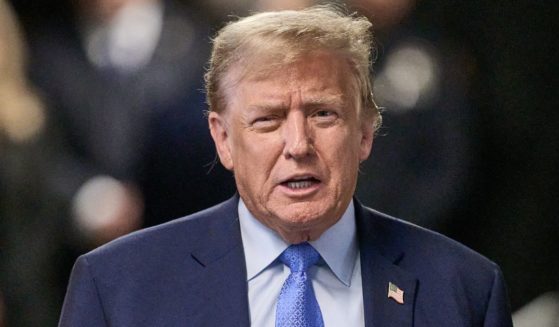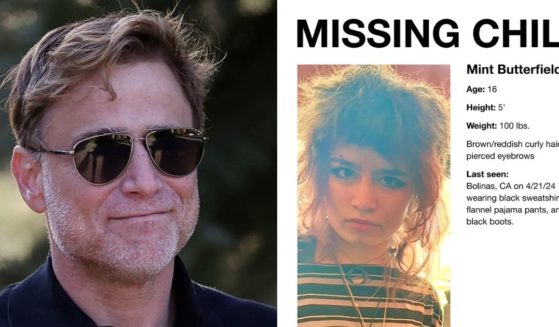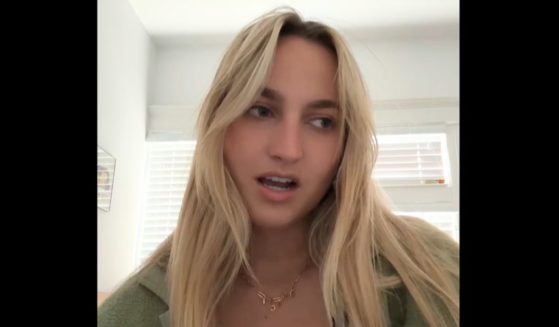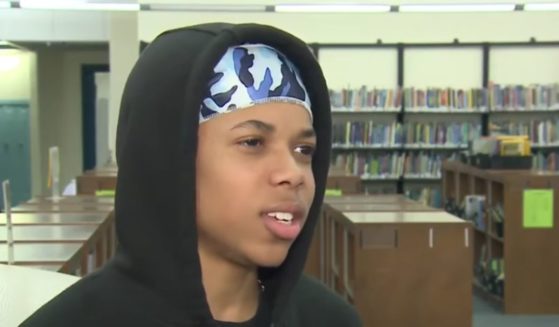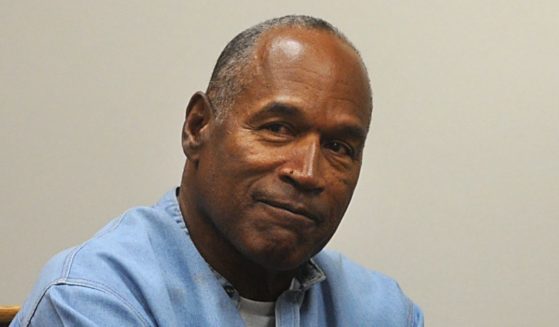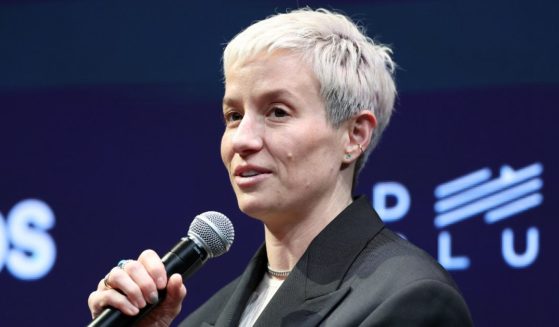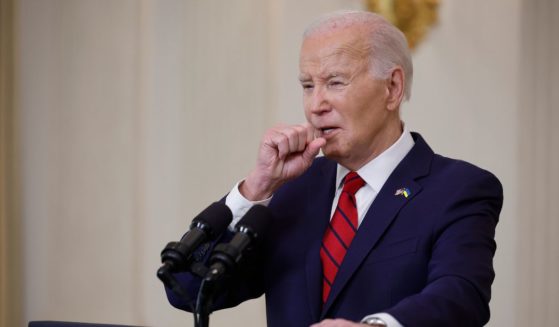Wuhan Study Mentioned by Tucker Vanishes: Claimed Market Didn't Sell COVID Bats, Was 500 Miles From Infected Bats
Did the novel coronavirus escape from a Chinese laboratory?
It sounds like an unpleasant conspiracy theory, something that would appear on Infowars. However, the evidence is mounting that maybe this unpleasant realization isn’t as insane as we thought.
In February, a paper about the origins of coronavirus showed up on ResearchGate authored by Botao Xiao of of the South China University of Technology. It’s since been retracted by the author for reasons one can only speculate about.
He wasn’t a crank author. He’s not, at least one might guess, a conspiracy theorist determined to make the government in Beijing look bad; those don’t tend to stick around long in Xi’s China.
Here’s the part of Xiao’s study that interested a lot of people: “In summary, somebody was entangled with the evolution of 2019-nCoV coronavirus. In addition to origins of natural recombination and intermediate host, the killer coronavirus probably originated from a laboratory in Wuhan. Safety level may need to be reinforced in high risk biohazardous laboratories. Regulations may be taken to relocate these laboratories far away from city center and other densely populated places.” [Emphasis ours.]
Xiao explained his decision to withdraw the paper in terse terms: “The speculation about the possible origins in the post was based on published papers and media, and was not supported by direct proofs,” he wrote in an email.
However, Tucker Carlson noted on his Tuesday show that the paper contained a number of inconvenient claims:
Tucker on Chinese Scientists Saying the Coronavirus Likely Came From Horseshoe Bat
“Here is the striking thing, there are no known colonies of this bat within 900 kilometers of Wuhan.”
The scientists found 2 possible locations for the Horseshoe Bat, 2 government labs in Wuhan. pic.twitter.com/XzqsZ6ZBUv
— The Columbia Bugle ?? (@ColumbiaBugle) April 1, 2020
“On February 6th, scientists from the South China University of Technology uploaded a paper on the origins of coronavirus. Where did it come from?” Carlson said.
“At the time the official death toll in China from the coronavirus was 564. The paper made a number of notable observations and claims that are worth knowing about and that’s why we are telling you. We want to be clear that we aren’t endorsing any of these conclusions, we haven’t independently confirmed them. We can’t.”
And, in fact, no Western scientist can.
That said, the points the paper made were rather striking — striking enough that it wasn’t just Carlson looking for answers.
WATCH: @TuckerCarlson raises serious Qs. Why are NYT, WaPo, ABC, NBC, CBS, CNN not reporting on this? Are their corporate bosses more worried about big $$ & access to Chinese markets? A global pandemic originates just miles from TWO labs actively researching bat coronaviruses?!? https://t.co/ZdnGOYuZC6
— Ted Cruz (@tedcruz) April 1, 2020
For instance, the 2019-nCoV coronavirus is said to have passed from the Chinese horseshoe bat to humans, either through an intermediary animal or directly. Yet, according to Xiao’s study, the bat was unlikely to have made it to people into the Wuhan wet market thought to be the origin of the outbreak either by flying in there or being consumed as food.
“The bats carrying CoV ZC45 were originally found in Yunnan or Zhejiang province, both of which were more than 900 kilometers [559 miles] away from the seafood market,” he wrote.
“Bats were normally found to live in caves and trees. But the seafood market is in a densely-populated district of Wuhan, a metropolitan of ~15 million people. The probability was very low for the bats to fly to the market. According to municipal reports and the testimonies of 31 residents and 28 visitors, the bat was never a food source in the city, and no bat was traded in the market. There was possible natural recombination or intermediate host of the coronavirus, yet little proof has been reported.
“Was there any other possible pathway? We screened the area around the seafood market and identified two laboratories conducting research on bat coronavirus.” [Emphasis ours.]
One of those laboratories was the Wuhan Institute of Virology. According to National Review, on Nov. 18, 2019, the Institute advertised a job “asking for scientists to come research the relationship between the coronavirus and bats.”
On Dec. 24, another job posting pertaining to bats and diseases was added, this one regarding “long-term research on the pathogenic biology of bats carrying important viruses has confirmed the origin of bats of major new human and livestock infectious diseases such as SARS and SADS, and a large number of new bat and rodent new viruses have been discovered and identified.”
As for the other research facility, Xiao’s paper mentions a scientist from there who “described that he was once attacked by bats and the blood of a bat shot on his skin. He knew the extreme danger of the infection so he quarantined himself for 14 days.”
At that research facility, just 300 yards from the wet market, tissue samples were obtained from caged bats; Xiao claimed “[t]he tissue samples and contaminated trashes were source of pathogens.”
“The WHCDC was also adjacent to the Union Hospital … where the first group of doctors were infected during this epidemic. It is plausible that the virus leaked around and some of them contaminated the initial patients in this epidemic, though solid proofs are needed in future study,” he wrote.
Most of the information that isn’t from Xiao’s study came from a YouTuber named Matthew Tye, which ordinarily wouldn’t make it terribly reliable — however, as National Review’s Jim Geraghty pointed out, almost all of this was based on information that’s publicly accessible.
There’s further speculation from Tye about Huang Yanling, rumored to be patient zero for the coronavirus. She was a graduate student at the Wuhan Institute of Virology in 2012, although details of her role there are sketchy and her page has been removed from the Institute’s website. There was enough speculation that the South China Morning Post — typically a pro-Beijing outlet — asked officials at the Wuhan Institute of Virology about her existence.
“It said Huang was a graduate student at the institute until 2015, when she left the province and had not returned since,” the SCMP reported on Feb. 16. “Huang was in good health and had not been diagnosed with disease, it added.”
Yet, as Geraghty noted, the Chinese government has yet to produce her for an appearance — something that would easily dispel all doubt.
A lot of this can’t be verified because, to be blunt, the Chinese government won’t allow foreign officials to inspect the laboratories and talk to people there. (Huang Yanling would be a good place to start, for instance.) If there were transparency, this wouldn’t be an issue.
As for Xiao’s paper being withdrawn, again, one can come up with a number of reasons why that might be — and they mostly point in the same direction.
Yes, his conclusion was speculative, but the facts he raised made for a curious problem for Beijing. If the bats weren’t for sale at the market and they weren’t native to the area, that’s a real problem for Beijing’s official narrative.
This isn’t conspiracy theorizing, but a call for answers. China hasn’t been a reliable actor on coronavirus information and the location of these research facilities doesn’t feel entirely coincidental.
This isn’t to say that the virus accidentally escaped from either of these facilities. In fact, it’s impossible to measure the chances of this being an accurate reconstruction of how this virus originated, but I would imagine it’s rather small.
Still, given Beijing’s history on this, one would hope they would address this in a serious manner and let international officials investigate the source of the outbreak.
At the very least, they can allow Botao Xiao to give a fuller explication of why he withdrew his paper — and why he wrote it in the first place.
Truth and Accuracy
We are committed to truth and accuracy in all of our journalism. Read our editorial standards.

